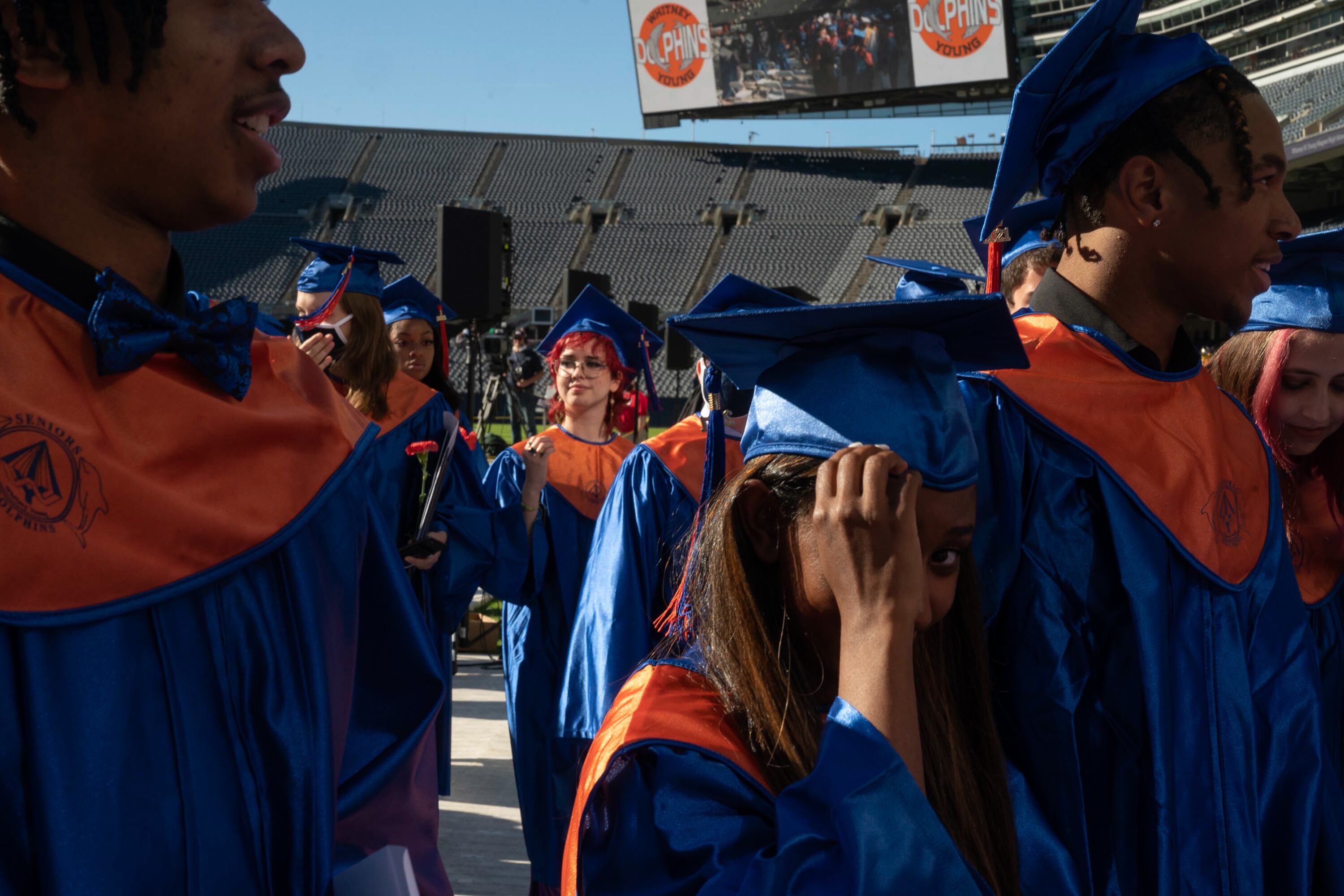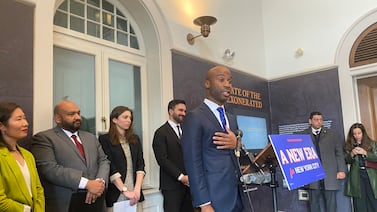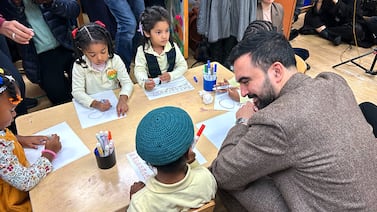Sign up for Chalkbeat Chicago’s free daily newsletter to keep up with the latest news on Chicago Public Schools.
Illinois high school students who went on to obtain a college degree earn more money than their peers with only a high school diploma, but those from low-income households, students of color, and women who graduate from college are likely to be paid less than affluent, white male counterparts, according to a new report.
Sarah Cashdollar, one of the authors of the report, said the researchers found that “education pays” regardless of how much a student’s parents earned. Other factors such as obtaining higher levels of education and what industry people go into matter as well.
“College and career choices do shape student outcomes,” said Cashdollar. “They do provide some opportunity for students to be upwardly mobile, but they don’t entirely erase those disparities.”
The report by the Illinois Workforce and Education Research Collaborative looked at education and employment outcomes for Illinois high school seniors who graduated between 2008 and 2012. It found disparities persist along race and ethnicity, socioeconomic backgrounds, and gender on who obtains a four-year college degree, what careers students go into, and how much people were able to earn.
The collaborative worked in partnership with the University of Chicago Consortium on School Research along with the Illinois Department of Employment Security, the Illinois Student Assistance Commission, and the Illinois State Board of Education to analyze data from the Illinois High School 2 Career dataset, according to a press release. This data collects information on high school students, whether they enrolled and graduated from college, what industries they enter, and their wages.
The report found that students from low-income households were less likely to obtain bachelor’s degrees, master’s degrees, doctoral degrees, or professional degrees than their peers from higher-income households.
The report also found that the state’s high school students whose parents were among the highest earners went on to earn about 48% more than those whose parents were in the lowest-earning group. Among those who came from the same socioeconomic background, Black and Latino students earned less than Asian American and white students, the report found.
Students in the study’s sample from low-income families were underrepresented in high-paying careers such as computer information sciences and engineering. They were more likely to work in accommodations and food services.
Regardless of whether students had the same levels of education, degrees from the same type of program, or worked in the same industry, students from high-income households earned more than their peers who came from low-income households. On average, the gap in earnings between students from high-income households and low-income households was $5,815 even if they had the same degree.
Despite some of the disparities across race, class, and gender in education and employment, the report found that a student’s level of education was more related to their wages than their parents’ income. Students with higher degrees, such as a master’s or professional degree, earned 2.5 times more than students with only a high school diploma, with a gap of $39,966.
There are some limits to the Illinois Workforce and Education Research Collaborative’s report. For instance, many of the students in the study’s sample had higher rates of going to college and becoming employed. Also, the students in the sample graduated high school between 2008 and 2012, right after the great recession but before the COVID-19 pandemic.
Cashdollar noted that higher education and the labor market have changed. However, she said, there is value in a college degree.
But getting students to enroll into college can present a challenge. Illinois’ postsecondary education enrollment rate slightly dipped after the COVID-19 pandemic hit, according to data from the state’s annual report card. Students who enrolled in college within 12 months after graduating high school went from 68.6% in 2018-19 to 66.1% in 2021-22 school year.
The report notes that more work needs to be done to expand access to education and employment opportunities for students to help aid upward socioeconomic mobility.
Over the years, Illinois has increased funding for state scholarship and grant programs and made changes to laws to help more students access higher education. This year, the state increased the Monetary Award Program grant by $10 million. The grant helps support students from low-income families to go to college. Students can receive an award up to $8,604.
Gov. J.B. Pritzker last month signed several bills to increase access to college, according to a press release. He signed the Public University Direct Admission Program Act, which allows public colleges and universities to offer admission to students based on their grade point average by the school year 2027-28. Two other measures ensure that high schools have a point person for students who are filling out the federal financial aid form known as FAFSA and require schools to set aside time for students to fill out the form; both bills take effect during the 2025-26 school year.
Another measure also increases access to dual credit programs, for students by requiring that school districts and community colleges work together to create the programs, which allow high school students to take college courses and earn credit for high school and college.
In previous years, student participation in dual credit programs in Illinois increased, but students from low-income households, students of color, English learners, and students with disabilities were less likely to take those courses.
Correction: July 16, 2025: This story has been updated to reflect that students from low-income families were overrepresented in the accommodations industry and food services, not that most students from low-income families worked in those jobs. Professional licenses were corrected to professional degrees.
Samantha Smylie is the state education reporter for Chalkbeat Chicago covering school districts across the state, legislation, special education and the state board of education. Contact Samantha at ssmylie@chalkbeat.org






